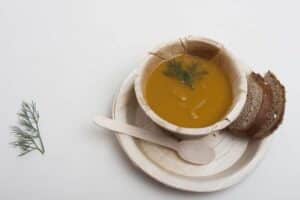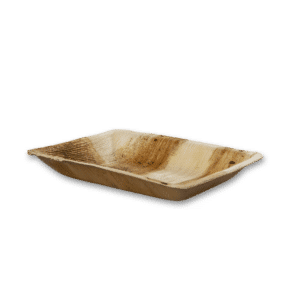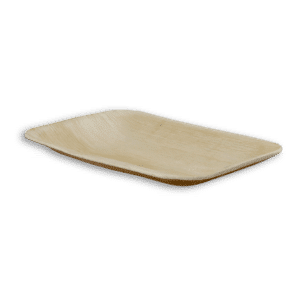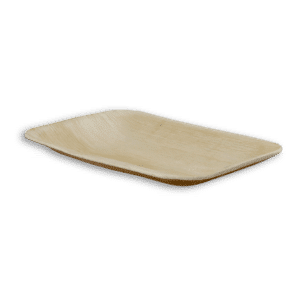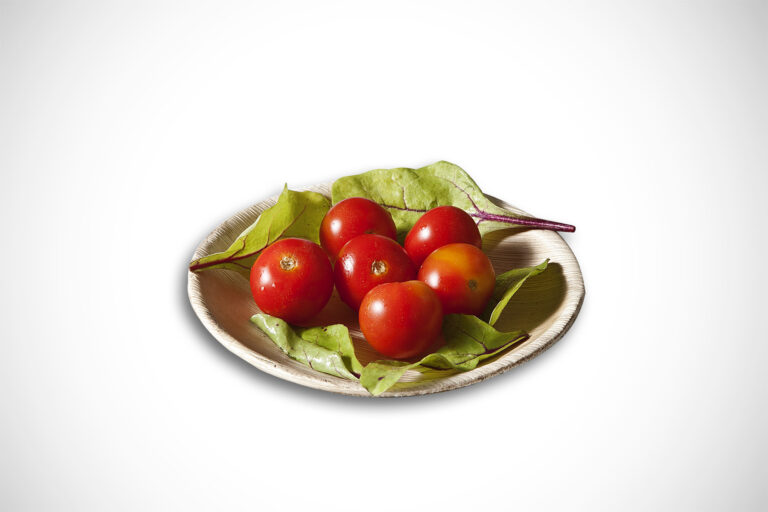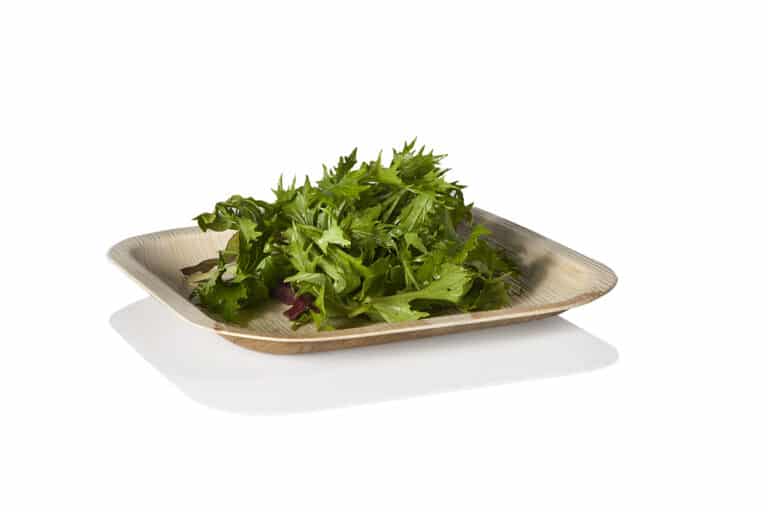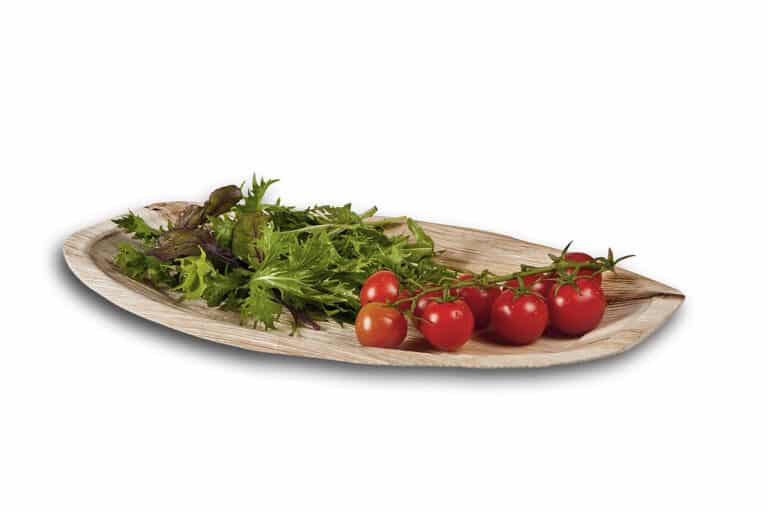We shall start with the good news:
We are happy to say that the disposable eco-friendly plates and tableware market is growing. New and interesting alternatives to plastic and paper unfriendly products are popping up. Like mushrooms after the rain. It is indeed a good matter. Any eco-friendly biodegradable product, like Areca palm leaf plates, is better than disposable products that are oil based.
Saying this, you understand that , many eco-friendly, biodegradable, vegan and compostable products available to choose from. For sure Areca palm leaf plates the most interesting of them.
But what are the differences between the products? And which product is the most eco-friendly? Let’s have a look.

Plates made from Bamboo:
Bamboo plates are made from bamboo most commonly found in Asia. Also in parts of Africa and South America. This material is one of the fastest growing plants. The stems can grow over 60 feet in height and it is important to many eco-systems, serving as food and shelter for animals. Bamboo as a result is essential plant for people living in developing countries.
But the process behind the Bamboo process can be concerning as well. Disposable Bamboo plates are made from fully-matured Bamboo trees that are cut down for commercial purposes. It takes a Bamboo plant three to five years to become mature and only then can they are used for Bamboo plates. Then, the trees are reduced to sawdust and bamboo fiber, then molded into plates, bowls, and cutlery, and binded with the chemical melamine. Because Bamboo itself is incredibly strong but also lightweight, this makes for a lightweight yet durable product that is naturally stain resistant.
The production:
There are two different ways bamboo plates are made, with melamine and with other all-natural materials. The first is much more cost-effective and therefore more common, but it has health risks according to the FDA. Melamine is a resin made from combining mealtime and colorless gas, which in and of itself can cause cancer. The resin can leak into food if it’s acidic or hot, especially if it is microwaved. Extreme heat is causing the release of these toxins, which is putting people at risk of kidney stones, kidney failure, infection, and other issues. Due to the rising concern of bamboo sawdust and its toxic resins, some countries in the EU like Austria, are banning the sale of bamboo tableware. It’s advised that you do NOT microwave on bamboo plates, even if the company says it is safe to do so.
Plates made from Sugarcane:
Bagasse is the fibrous material that remains after the juices are removed from sugarcane stalk. The fibrous portion generally becomes a waste product after the juices are separated. To make the bagasse plates and bowls, the process starts with the new bagasse material. The material arrives at the manufacturing facility as wet pulp. The wet pulp is then converted to dry pulp board after being pressed in a special tank.
The production:
Bagasse can be made into plates and tableware using either wet pulp or dry pulp board. When wet pulp requires fewer steps in the production process than using dry pulp board, wet pulp keeps polluted in its mixture. In order to make higher quality it is needed to remove the impurities and convert the wet pulp to dry pulp board. After the wet pulp has been converted to dry pulp board, the substance is mixed with an anti-oil and anti-water agent in a pulper to make the substance stronger. Once blended, the mixture is moved into a preparation tank. Then to the molding machines and these machines press the mixture into the shape of a bowl or plate. They have ability to create up to six plates and nine bowls at a time.
The plates and bowls are 100% biodegradable. They will completely break down in 90 days in a compost facility.
Plates made from PLA:
Polylactic acid, also known as PLA. It is made from renewable, organic sources such as corn starch or sugar cane. Using biomass resources makes PLA production different from most plastics, which are being produced using fossil fuels through the distillation of oil. Despite the raw material differences, PLA is produced using the same equipment as oil based plastics. This makes PLA manufacturing processes relatively cost efficient. PLA is the second most produced bioplastic and has similar characteristics to polypropylene (PP) products. It is as well biodegradable.
PLA – the problems:
The material properties of PLA makes it suitable for the manufacture of plastic film, bottles and biodegradable medical devices. Also screws, pins, plates and rods. These are designed to biodegrade within 6 to 12 months. The material is used as a shrink-wrap material since it constricts under heat. But, many types of PLA have a low glass transition temperature. So they become unsuitable for making plastic cups and plates to hold hot liquids. The production uses 65% less energy than producing normal plastics and generates 68% less greenhouse gasses and contains no toxins. PLA remains environmentally friendly if the correct end-of-life process is followed.
However the rate of degradation is very slow in regular temperatures. A study from 2017 shows that there was no degradation seen in over a year of the material fluting in seawater at 25°C.
Plates made from Birchwood:
Birchwood provides 100% biodegradable and compostable plates. They will decompose in 80 days. The Forest Stewardship Council (FSC) certifies the use of Birchwood to make eco-friendly plates .The manufacturing process has no harmful chemicals. You can serve hot or cold food on these. They are microwaveable and freezer-proof. Normally arrive from north China from large industrial plants that do not necessarily follow workers rights.
Edible plates:
Maybe the last word in the disposable eco-friendly market. They are made usually from wheat, rice, oils, tapioca, potatoes, cornstarch and other natural raw materials but still not enough data and studies about effects, advantages and disadvantages.
![]()
![]()
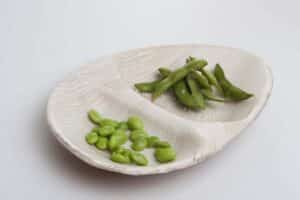
So what will be your best choice?
| Decomposition | Durability | Sustainability | Biggest disadvantage | |
| Areca leaf | 2 months. | Great with hot food. | Process and all lifecycle sustainable of a renewable resource. | Not found. |
| Bamboo | 3 months. | Normally bends with hot food. | The process of manufacturing is unsustainable. | Cutting down bamboo is damaging the environment. |
| Edible | A month. | Depends on raw. materials made from. | Usually yes, depends on raw materials. | Normally maximum of 12 months shelf life. High prized. |
| PLA | 180 days, but some studies show that even more. | Are not suitable with hot food. | Only process is sustainable for sure, doubts about lifecycle. | Suitable just for cold food. |
| Sugarcane | 3 months. | Suitable with hot food. | The process is unsustainable. | Factory manufactured look. |
| Birchwood | Nearly 3 months. | Bends with hot food. | Is sustainable. | The trees are cut for the production. |
Conclusion:
First of all choose go eco-friendly. Nearly all disposable plastic plates are not even recyclable. For producing paper plates, a huge amount of energy is wasted.
Areca palm leaf plates have the best overall value when it comes to sustainability and eco friendliness. Also in the total cost, look, and style. When you use these plates in elegant events or just at a backyard barbecue, Areca palm leaf plates are a good choice. They will hold any food you serve on them. Hold up under high heat. Look absolutely beautiful on any table setting.
